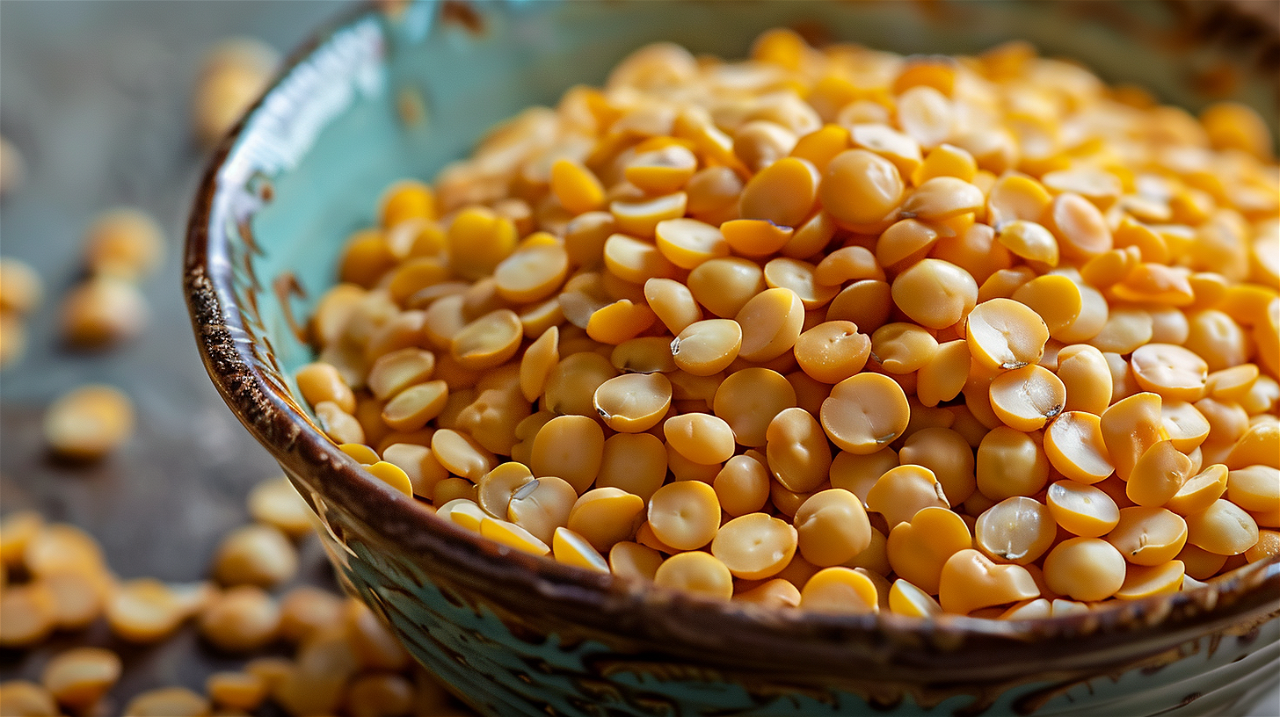
Toor or pigeon peas (Cajanus cajan) are an integral part of India's agricultural landscape, offering nutritional value and economic benefits to farmers and consumers alike. The cultivation of toor encompasses a wide range of varieties, each with its unique attributes and adaptations to different agro-climatic conditions. Let’s delve into the diverse array of toor varieties cultivated across various regions of India, exploring their characteristics, disease resistance, and suitability for different cropping systems.
Varieties Released in 2020
MPV-106 (Rani):
MPV-106 (Rani) exhibits moderate resistance to wilt diseases and is resilient against sterility mosaic. It thrives in a variety of agro-climatic conditions and is cultivated in states such as Andhra Pradesh, Karnataka, Tamil Nadu, and Telangana. With a maturity period of approximately 164-174 days, it offers stable yields ranging from 15-16 quintals per acre.
Raj Vijay Arhar 19 (RVA 19):
Raj Vijay Arhar 19, with its moderate resistance to wilt and sterility mosaic diseases, is cultivated primarily in Madhya Pradesh, Maharashtra, and Gujarat. With a maturity period of around 166-185 days, it provides farmers with reliable yields averaging from 14-15 quintals per acre.
Bheema GRG-152:
Bheema GRG-152 is known for its moderate resistance to wilt and sterility mosaic diseases and is cultivated in states like Chhattisgarh, Madhya Pradesh, Maharashtra, Rajasthan, and Gujarat. With a maturity period of approximately 160-165 days, it offers stable yields averaging from 12-14 quintals per acre.
Pant Arhar 6 (PA 421):
Pant Arhar 6 is cultivated in states such as Delhi, Haryana, Jharkhand, Punjab, Rajasthan, Uttar Pradesh, and Uttarakhand. With its moderate resistance to wilt and sterility mosaic diseases, and a maturity period of 135-177 days, it provides farmers with reliable yields averaging from 17-20 quintals per acre.
IPH 15-03 (Hybrid):
IPH 15-03 (Hybrid) offers resistance to Fusarium wilt, sterility mosaic, and moderate resistance to Phytophthora blight. Cultivated in states like Delhi, Haryana, Punjab, and Uttar Pradesh, it has a maturity period of around 144-163 days, providing farmers with comprehensive disease management solutions and stable yields averaging around 16 quintals per acre.
Varieties Released in 2021
LRG 133-33:
Resistant to wilt, LRG 133-33, developed at Regional Agricultural Research Station (RARS), Lam, Guntur, showcases resilience to field conditions, ensuring consistent performance and yield stability. With a maturity period of around 170-180 days, it offers stable yields ranging from 12-14 quintals per acre.
Phule Damayanti (Phule Tur-0723-1-2-3):
Cultivated at Mahatma Phule Krishi Vidyapeeth (MPKV), Rahuri, in the states of Andhra Pradesh, Karnataka, Tamil Nadu, Telangana, and Odisha, Phule Damayanti offers moderate resistance to wilt and sterility mosaic diseases, along with tolerance to various pests, making it a preferred choice for its adaptability and nutritional quality. It provides farmers with stable yields averaging around 15-16 quintals per acre.
Rajendra Arhar-2 (DA 15-11):
Developed at Dr. Rajendra Prasad Central Agricultural University (RPCAU), Pusa, Bihar, in the states of West Bengal, Bihar, Jharkhand, and Uttar Pradesh, Rajendra Arhar-2 is esteemed for its resistance to wilt and sterility mosaic, providing farmers in the North Eastern Plain Zone with a reliable option for sustainable cultivation. With a maturity period of around 247-257 days, it offers stable yields ranging from 18-19 quintals per acre.
Pusa Arhar 2018-4:
With low incidence of wilt and sterility mosaic diseases, Pusa Arhar 2018-4, developed at Indian Agricultural Research Institute (IARI), Pusa, New Delhi, is valued for its disease resilience and yield stability. It provides farmers with stable yields averaging around 16-17 quintals per acre.
IPA 15-06:
Resistant to wilt and tolerant to sterility mosaic disease and stem blight, IPA 15-06, from Indian Institute of Pulses Research (IIPR), Kanpur, in the states of Chhattisgarh, Madhya Pradesh, Maharashtra, and Gujarat, offers farmers in the Central Zone a reliable option for sustainable cultivation practices. It provides stable yields averaging around 16-17 quintals per acre.
TDRG 59 (Telangana Kandi 3):
TDRG 59, cultivated at Agricultural Research Station (ARS), Tandur, in the states of Andhra Pradesh, Karnataka, Tamil Nadu, Telangana, and Odisha, is moderately resistant to wilt and sterility mosaic. With a maturity period of around 170-175 days, it provides stable yields averaging around 16-17 quintals per acre.
Varieties Released in 2023
Phule Kaveri (Phule Tur-11-4):
Phule Kaveri, developed at Mahatma Phule Krishi Vidyapeeth (MPKV), Rahuri, in the states of Andhra Pradesh, Karnataka, Tamil Nadu, Telangana, Tamil Nadu, Telangana, and Odisha, offers moderate resistance to wilt and sterility mosaic diseases. It provides farmers with stable yields averaging around 15-16 quintals per acre.
Phule Trupti (Phule Tur10-1):
Phule Trupti, also developed at Mahatma Phule Krishi Vidyapeeth (MPKV), Rahuri, in the states of Chhattisgarh, Madhya Pradesh, Maharashtra, and Gujarat, exhibits moderate resistance to wilt and sterility mosaic diseases. It provides stable yields averaging around 15-16 quintals per acre.
Renuka (BDN 2013-2):
Renuka, cultivated at Vasantrao Naik Marathwada Agricultural University (VNMAU), Parbhani, in the states of Madhya Pradesh, Maharashtra, Gujarat, and Rajasthan, is moderately resistant to wilt and resistant to sterility mosaic disease. It offers stable yields averaging around 18-21 quintals per acre.
















